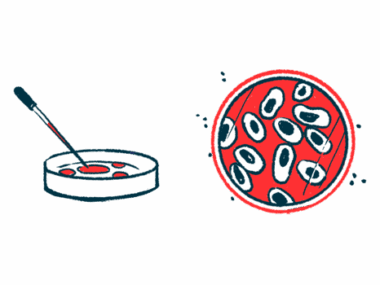Kaftrio eases some CF symptoms after lung transplant: Study
Digestive symptoms improved; patients reported quality of life changes
Written by |

Kaftrio, a combination of elexacaftor, tezacaftor, and ivacaftor that’s marketed as Trikafta in the U.S., may ease breathing and digestive symptoms in adults with cystic fibrosis (CF) who’ve had a lung transplant, a study from the Netherlands suggests.
Researchers did observe a slight, but significant, increase in creatinine, a sign that the kidneys may not be functioning as well, however. Creatinine did stay stable after adjusting the dose of calcineurin inhibitors, immunosuppressants used to keep transplanted lungs from being rejected.
In the study, in “Evaluation of Elexacafor/Tezacaftor/Ivacaftor therapy after lung transplantation in Cystic Fibrosis: The Dutch National KOALA study,” the researchers said “careful monitoring of renal function and [calcineurin inhibitors] levels are recommended.” The study was published in JHLT Open.
CF is a genetic disease that causes thick mucus to build up in the lungs and other organs, making it difficult to breathe and more likely to develop airway infections. Other symptoms include digestive issues, such as constipation.
Vertex Pharmaceuticals’ Kaftrio works by making mucus less thick, easing symptoms and helping patients breathe better.
While fewer patients have needed a lung transplant since Kaftrio’s approval, for those patients who’ve already had one, the use of Kaftrio has been limited because of concerns about whether it works well and how it interacts with immunosuppressants like calcineurin inhibitors.
Symptom relief for transplant patients
In a study with 50 adults with CF from three transplant centers in the Netherlands, the researchers compared how severe symptoms were before and three months after starting Kaftrio, focusing on symptoms outside the lungs that persisted after a lung transplant.
All the patients carried at least one copy of the F508del mutation, the most common CF-causing mutation, with 34 (68%) carrying two. The patients’ median age was 42 and nearly two-thirds (62%) were men. It had been a median of 11 years since they’d had a lung transplant and most (98%) used calcineurin inhibitors as immunosuppressants.
The most common symptom was pancreatic insufficiency, which occurs when thick mucus traps digestive enzymes in the pancreas, preventing them from flowing into the digestive tract (82%). Chronic rhinosinusitis, a lasting inflammation of the nose and sinuses was also common (80%).
After three months on Kaftrio, patients scored a median of 19 points less than before treatment on the 22-item Sinonasal Outcome Test (SNOT-22), where higher scores indicate more severe chronic rhinosinusitis. For more than two-thirds (69%), the improvement was considered clinically meaningful, by 8 points or more.
A range of digestive symptoms, including abdominal pain or cramping, constipation or loose stools, loss of appetite, and use of antiacids or laxatives, eased significantly over three months of treatment, which also resulted in positive changes in quality of life. In the CF Questionnaire-Revised (CFQ-R) for quality of life, patients reported improvements in eating, breathing, digesting food, and feeling emotions. They also reported higher energy levels and an improved perception of their health overall.
To keep calcineurin inhibitors within safe levels, the median daily dose was reduced by 33%, from 6 to 4 mg. Creatinine went up slightly after starting treatment with Kaftrio, but stayed stable after adjusting the calcineurin inhibitor dose.
While Kaftrio offered clear benefits for some breathing and digestive symptoms, its effects on complications like being underweight or developing CF-related diabetes were limited, with no significant improvements after three months. The study lacked a control group for comparison and the patient group was small and the patients were followed only a short time. Because treatment with Kaftrio is costly, “careful consideration and further studies are required,” the researchers wrote.







